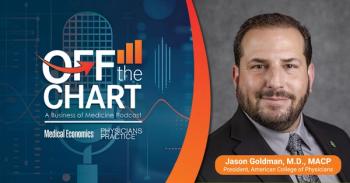
How should we define quality care?
Quality means different things to different people, especially as it pertains to healthcare
Editor's Note:
Dr. AnhaltFor physicians,
Further reading:
With the imminent change in national health policy, we simply
For me, right now I’m not only thinking about the ACA metrics for quality care, but what’s worked for me since those first days I went into medical practice. My success has been grounded in a desire to engage in honest dialogue with my patients that starts with real life before we talk disease management.
Popular online:
For example, as a pediatric endocrinologist, I regularly treat children with type 1 diabetes. Living with a chronic illness is not easy at any age, let alone living with a chronic illness that demands your vigilance 24/7 as a child. In order to deliver true quality of care, I try to go beyond prescribing a treatment plan for each patient.
Working annually at a summer diabetes camp is perhaps the most eye-opening reminder that my patients are kids first and kids always-despite their condition and the responsibility that comes with managing it effectively. There’s nothing like seeing a child’s “treatment plan” in the real-world to give insights into how you might improve them to work into everyday life.
Related:
It is worth noting, however, that quality of care doesn’t just come from treatment plans. Quality care can start the moment an individual enters your practice. Are they greeted by the receptionist? Is the nurse friendly when taking their vitals? Do they have to wait a long time to see you?
The truth is, everyone at a practice who interacts with a patient is a vital part of the quality of care chain and everyone involved should work together to provide the safest, high-quality care possible.
We can’t know the changes that will come to healthcare over the coming few years. But we can rely on some evergreen best practices no matter what changes take hold.
Blog:
As a takeaway, here are a few tips:
1. Evidence-based care – Physicians should make it a priority that patients receive medical care based on the most current scientific evidence for what is appropriate and effective. Seek out publications, presentations and conferences to stay connected to the latest learnings from evidence.
2. Preventative services – Whenever possible, find ways to incorporate motivational counseling so you can guide/support your patient’s path to healthy habits.
3. Practice performance measurement - Conduct your own performance measurement on your practice. What goals do you want to set for yourself and for your team? Collect, analyze and actively use your performance standards to foster quality assessment and performance improvement in all areas of care and services.
4. Utilize today’s technology - The world of healthcare technology has created myriad opportunities for physicians to get a better handle on the quality of care they are providing. Some EHR platforms, for instance, provide analytic capabilities that allow you to see how your patient’s health is improving or not so you can make the best judgement on next steps for care.
Newsletter
Stay informed and empowered with Medical Economics enewsletter, delivering expert insights, financial strategies, practice management tips and technology trends — tailored for today’s physicians.
















